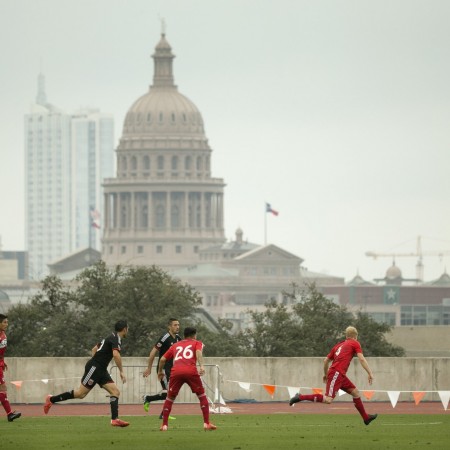
It’s clear that the group is still tidying up from a 2015 expansion campaign that was disappointing both on and off the field. But they are also focused on returning a viable team to competition for 2017. In order to be viable, the Aztex feel that they must own – or at least control – their own venue.
While supporters have been critical of USL for their handling of the situation, the Aztex front office has a different view. They feel that the opportunity to take a break from play for 2016, to get their financial house in order and get into a sustainable stadium situation, was a reprieve. The break will allow them to focus on this single, crucial factor in the club’s future.
When we asked them what happened over the course of the club’s first season at the professional USL level, it was clear that many things didn’t play out as expected. As David Markley put it, “USL has changed for the better.” With league improvement there are also increased demands from the partner clubs, but the real silver lining here is that USL has a viable model for long term success. The league seems to be on firm ground, which has not always been the case, and it continues to benefit from their affiliation with MLS.
Over the last few years, USL has been in the midst of unprecedented expansion with independent clubs, like the Aztex, as well as MLS-2 organizations, who have different objectives than the independents. While the MLS-2 teams can focus primarily on player development, and not sweat it when they only sell a few hundred tickets, an independent club has to be sustainable without help from a more established, more stable parent organization.
Certainly the economics of soccer have changed in this country over the last few decades. The MLS entry fee for Columbus was approximately $1 million in 1994; current entry fees are more than 100 times that. Add in the required stadium, and at least one year’s worth of operating expenses, and the real price tag to start a new MLS club is pushing $300 million.
USL has seen its own economic situation change. Entry fees paid to the league have been increasing steadily as well, and the cost of running a club at this level has risen to approximately $2 million per year. That figure is nearly double the cost estimates used in the business plans the Aztex made when planning their move up from PDL.
The reasons for the increase in operating cost are varied, but they are mostly tied to rising player salaries, increasing travel costs, and venue-related expenses.
The Aztex FO learned the hard way that it’s difficult to mitigate those increasing costs when you don’t control your own venue. Increasing revenue is more than selling tickets: it also includes adding more sponsors, providing more merchandise and concessions – especially alcohol, and other additional sources of income.
The Aztex do have a plan. Pinto de Silva stated, “We have a 7 year plan. The next 2 years are planned out in detail.” While they were unable to reveal more about the plan, Pinto de Silva added, “We need to make soccer stronger. Value for the club will be created over time.”
We were also told by Pinto de Silva that after considering many options, “The club has plans to build a 5,000 – 6,000 seat stadium at an estimated cost of $5-6 million,” and “10-12 viable locations are being considered.” While we weren’t given a list of sites, the likelihood of a downtown venue at this time is unlikely. The scarcity and high cost of downtown land has pushed the FO to look for alternatives further from the city center.
The current vision for the stadium can be credited to lessons learned from a visit to Sacramento. The Aztex stadium plan includes a structure that would be permanent in appearance but that could be deconstructed, moved, and reconstructed at another site if necessary. It would be very similar to Bonney Field, the venue constructed for Sacramento Republic FC.

Van de Zant echoed, “the Aztex have an ultimate goal of becoming an MLS franchise” and while a venue outside of downtown might not be ideal for MLS expansion, “a USL-quality stadium could make a great training ground for a future in MLS.” Sites being considered could also include enough extra space for a complex of youth fields, similar to what is outside of FC Dallas’s stadium in Frisco.
Stadium ownership would also enable the Aztex to host more events, like the 2015 ATX Pro Challenge. The club had a great response from the three MLS sides that participated (Columbus Crew, D.C. United, and FC Dallas), and have been fielding inquiries from MLS clubs about a 2016 event. While the four-team tournament was a big success on and off the pitch for the visitors, the venue and tournament costs became a burden to the Aztex, both financially and in terms of staff effort that would otherwise have been put toward Austin’s own upcoming season.
This organization has a tall order and a short timeframe in which to fill it. But they’re passionate, focused, and doing everything they can to make it a reality.
A stadium will not cure all that ills Austin’s professional soccer landscape. However, if the Aztex are able to execute on their stadium plan, it clears the biggest hurdle for returning the club to the pitch for 2017. Perhaps more importantly, it would establish a firm foundation for the organization to grow on, and Austin’s professional soccer team would finally have a house of their own.

